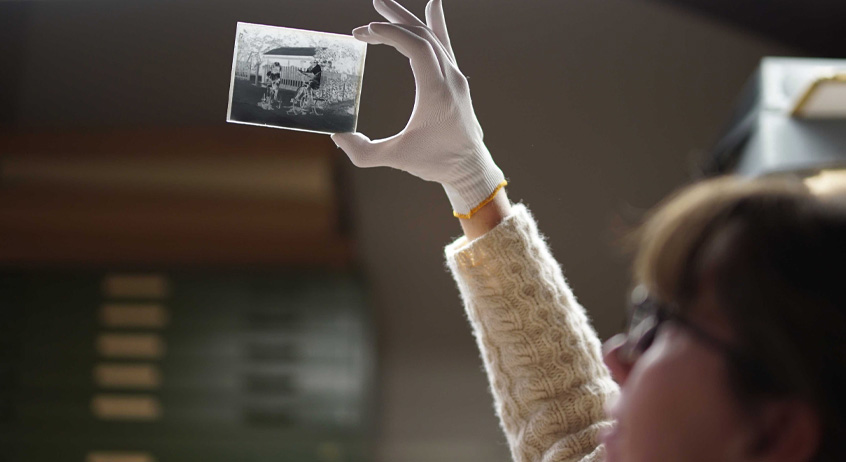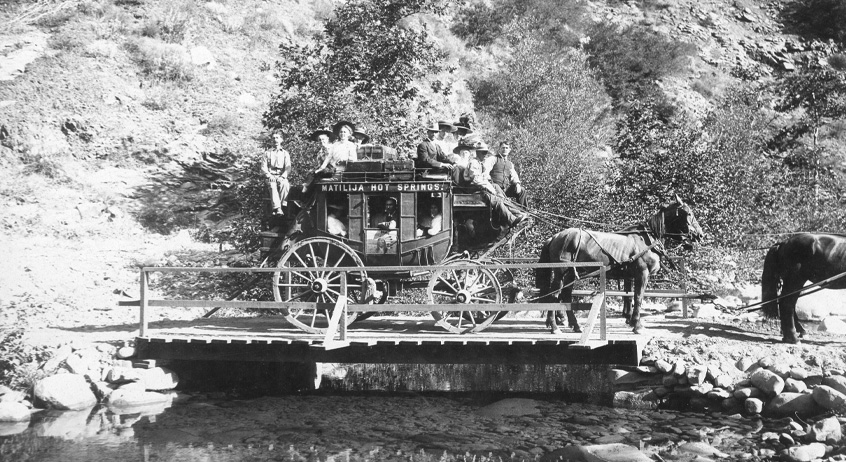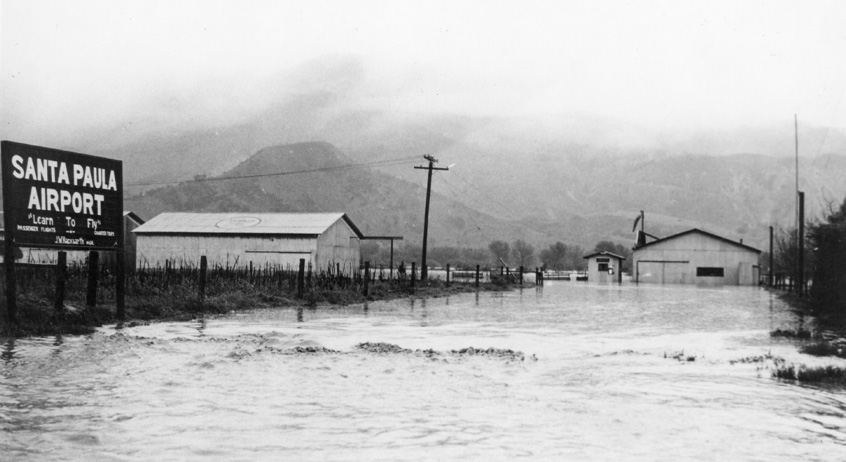Mission Statement
The Museum of Ventura County engages participants in meaningful experiences with history, art, culture, and each other.
Our History
The Museum of Ventura County first opened in 1913 in the newly built Ventura County Courthouse (now Ventura City Hall). Soon known as the Pioneer Museum, its collections of artifacts and curios were the legacy of Dr. Cephas Bard, a Pennsylvania doctor who came to Ventura after the Civil War. A compassionate man with wide-ranging interests, Dr. Bard accepted historical objects in lieu of cash payment for his services. Priceless Chumash, Spanish and Mexican-American objects from his collection are on display in the galleries today.
The Museum evolved and transformed significantly over the next 100 years. It moved twice as it outgrew its homes. Its collections expanded to incorporate art, agricultural equipment, as well as memorabilia of all types, marking the passage of the eras in Ventura County. While the Museum initially focused on the City of Ventura, it grew to encompass and be the official repository of historical artifacts and documents for the entire County of Ventura, and all ten of its cities. The Research Library was created, and the Museum began to publish regular historical journals.
By 2012, the Museum occupied two buildings. The Ventura campus includes permanent and changing exhibit halls, a gallery dedicated to the George Stuart historical figures, a children’s garden, an historic courtyard, an events pavilion, and the Research Library. In Santa Paula, the Agriculture Museum, with three galleries and a garden, tells the story of one of Ventura County’s biggest industries.
How the Museum Fulfills Its Mission
Over 30,000 individuals per year enjoy the Museum’s exhibits, Research Library, tours, special programs, and events.
- Collections: The Fine Arts and Historical Artifacts collection includes more than 30,000 objects and works of art. The fine arts portion of the collection includes priceless works by renowned local artists such as John Nava, Jessie Arms Botke, Omar d’Leon, Horace Bristol and Beatrice Wood, and more than 200 extraordinary historical figures by Ojai artist and historian George Stuart. Artifacts relating to Ventura County’s early inhabitants, and to participation in local, national and global events such as the Spanish American War, World War II, and the Saint Francis Dam Disaster, chronicle the history of Ventura County to the present day.
- Research Library and Archives: A non-lending Research Library affiliated with the County Library holds over 170,000 items relating to our County’s history including maps, photographs, newspapers, books, periodicals, manuscripts, oral histories and video tapes, many of them rare and one-of-a-kind, articles of incorporation, and other county records. We draw from all of these holdings to create interpretive exhibitions that illuminate our County’s past, and the possible course of its future.
- Exhibits: Our changing and permanent exhibits interpret our local history and culture in order to preserve knowledge of and stimulate interest and appreciation for Ventura County. A number of these exhibits have traveled to other museums and institutions. The George Stuart Historical Figures®, on display in the Smith Gallery, are world famous for their lifelike and detailed portrayals of famous individuals throughout history.
- Children’s Programs: Over 2,900 children are served each year through hands-on field trips to the Ventura and Agriculture Museums. The Museum also offers “Free First Sundays” every first Sunday of the month to encourage families and individuals to visit both museums.
- Community Events and Programs: The Museum sponsors and presents about 50 events each year, including lectures, gallery talks, films, concerts, receptions, gala events and more.
- Members: Over 1,100 businesses and individuals support the Museum and special benefits like free entry, store and event discounts, advance sales, the annual Journal of Ventura County History, and more.
- Annual Budget: The Museum’s 2020/21 budget is approximately $2,800,000. About 10% of the funding to support the Museum comes from earned revenue (admissions, sales, rentals, etc.). The rest comes from a combination of government support, foundation support, endowment earnings, special events, and contributions from individuals and corporations. The City of Ventura and Ventura County have each made significant investments in the Museum, in order to ensure that the Museum is sustainable and able to appropriately steward its collections and serve the community. The Museum’s most recent audited financials can be found HERE.
- Endowment Funds: : Endowment funds are professionally managed and are overseen by the Finance and Investment Committee, made up of Board and community members. The funds provide operating income for either restricted or general Museum activities, as designated by the donor. A list of all endowments can be found here.
- Board of Directors: The board meets bi-monthly and is comprised of up to 16 board members elected for three-year terms
- Staff and Volunteers: The Museum is operated by 15 full-time and 18 part-time professional staff members, and a cadre of over 40 active docents and volunteers who contribute over 15,000 hours of service annually.
Here are select accomplishments in each of 6 pillars, between July 1, 2018 and January 31, 2020:
Relevant Programs
- Increased audience numbers by 50%
- Introduced 75 new programs
- Installed 45 new exhibits
- Launched multiple “rapid response collecting” efforts
- Expanded hours at the Albinger Archeological Museum
- Started an Innovation Committee
- Exceeded national standards for online engagement by 44% (open rate) and 260% (click rate)
Sustainable Funding
- Raised $2.34 million for the endowment (bringing total to $8.8 million)
- Increased earned revenue by over 10%
- Secured 525 new donors
- Increased average onsite revenue by over 500% (from $.45 per visitor per trip in 2017 to an average of $3 per person per trip in 2019)
Transparent Governance
- Approved new bylaws
- Adopted 22 new policies for maximum transparency
- Developed all new committee descriptions and roles
Accessible Collections
- Deaccessioned over 1,000 artifacts and artworks (removing certain items from the collection is vital as it will increase the Museum’s ability to properly care for its collection)
- Adopted a new Collections Policy
- Completed an archives assessment and developed an archives conservation plan
- Established partnership with CSUCI and digitized 702 archive items
- Processed 134 cubic feet of backlogged archives
Robust Partnerships
- Have established collaborations with 40 new partners, ranging from the Conejo Valley Safe Passages Program for youth-at-risk to the Channel Islands Bike Club to the Ventura Chamber of Commerce
- Started new historical alliance
Compelling Vision
- Initiated a Visioning and Strategic Planning process, with survey and workshops
- Adopted a new vision statement and purpose.



